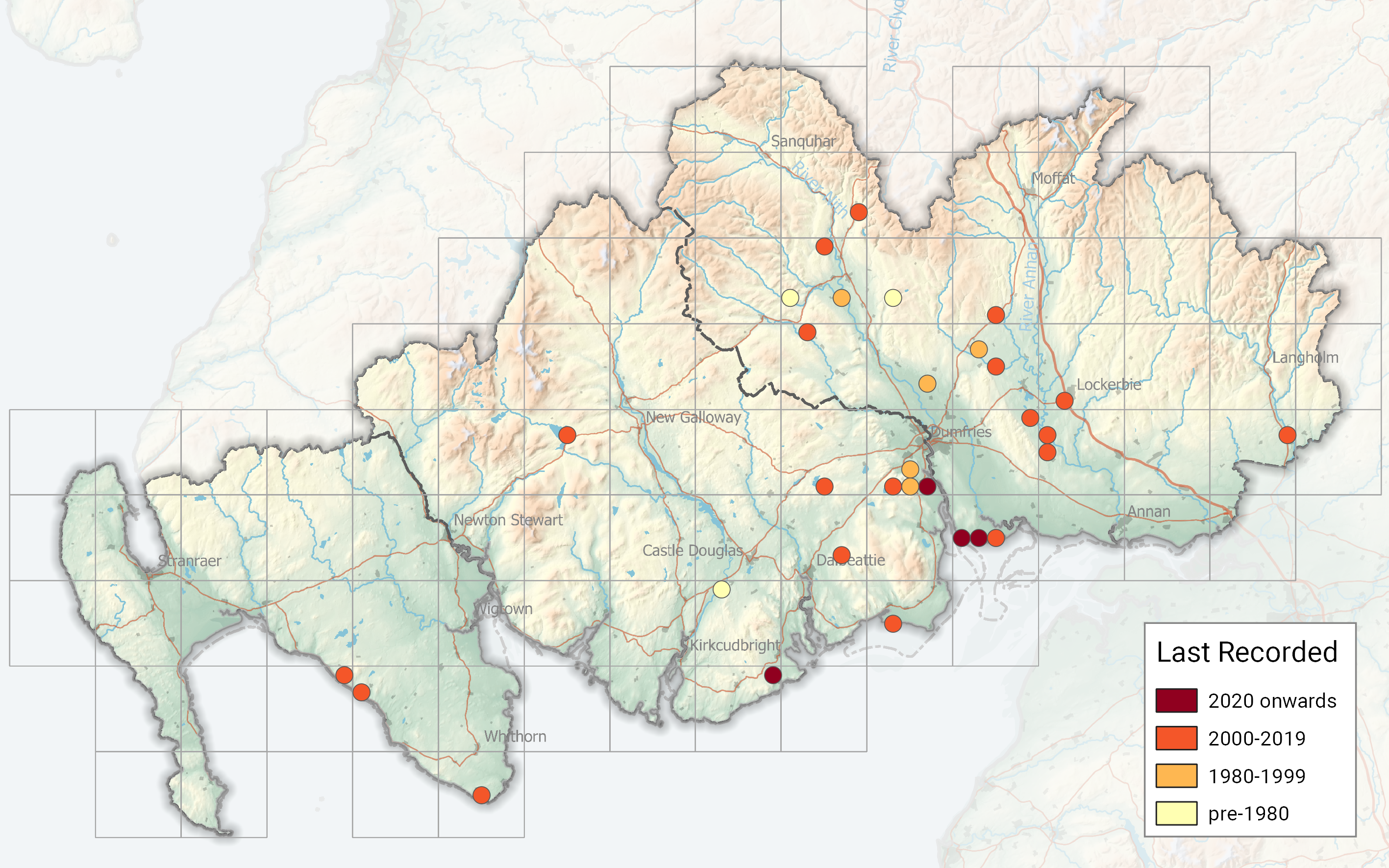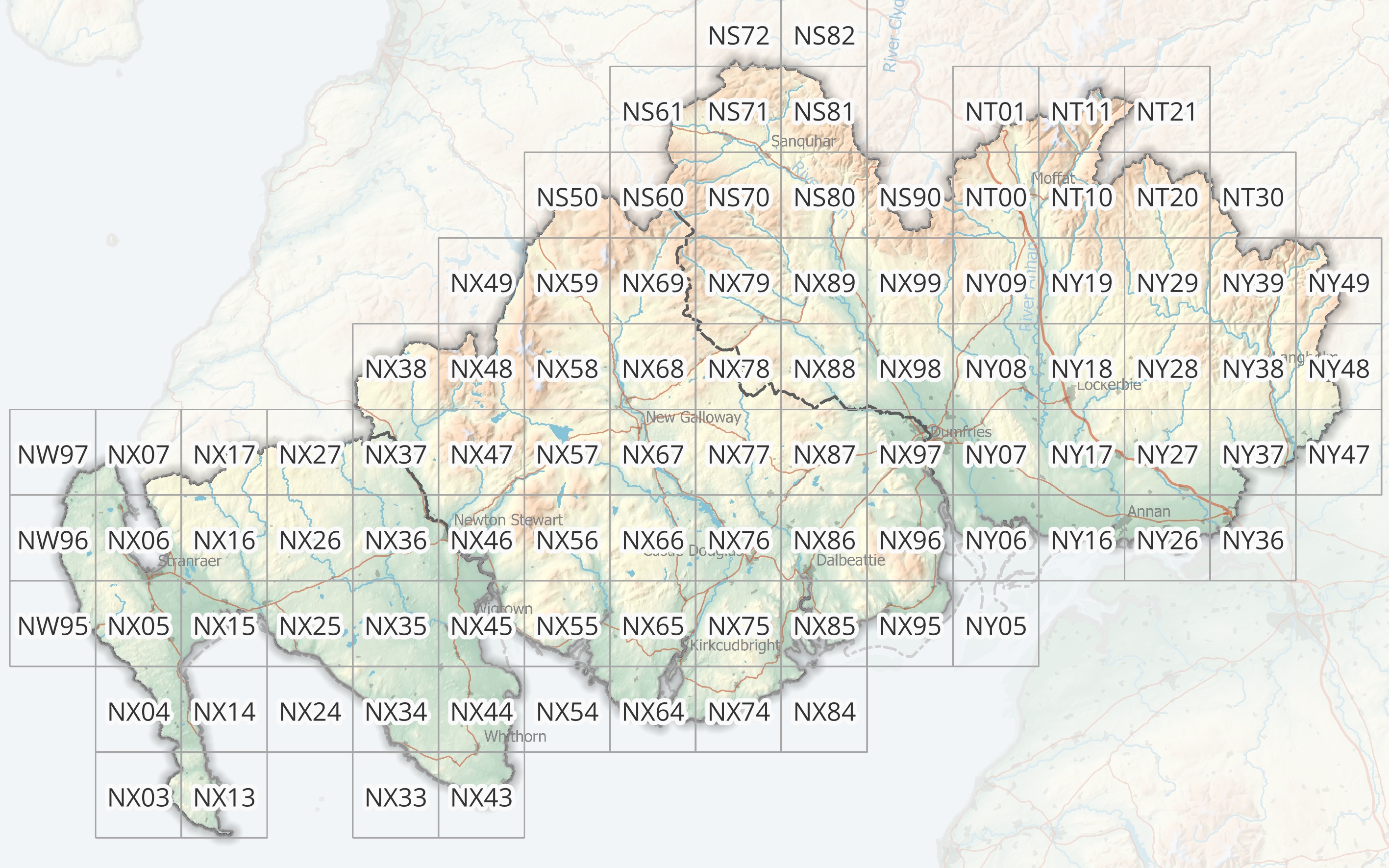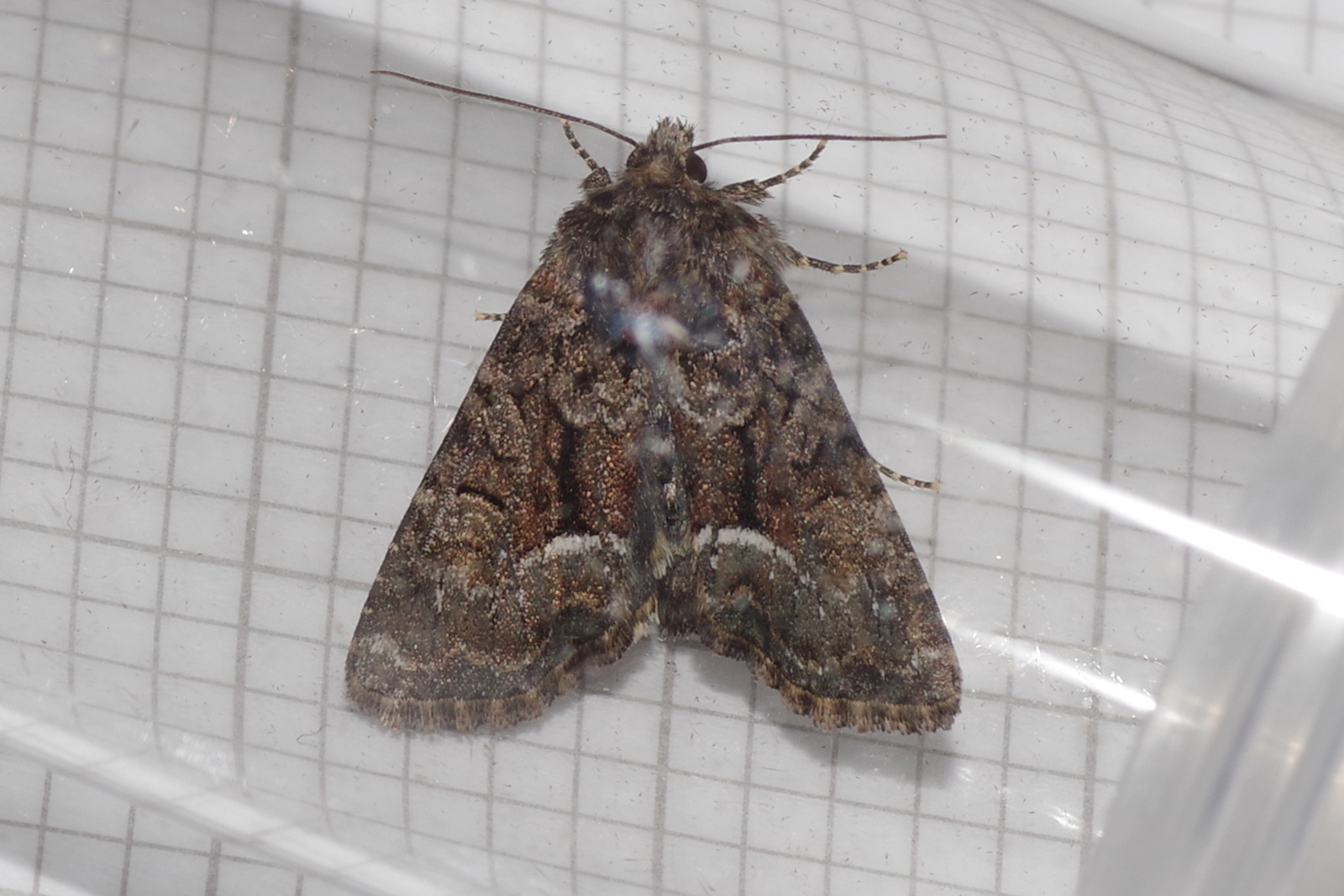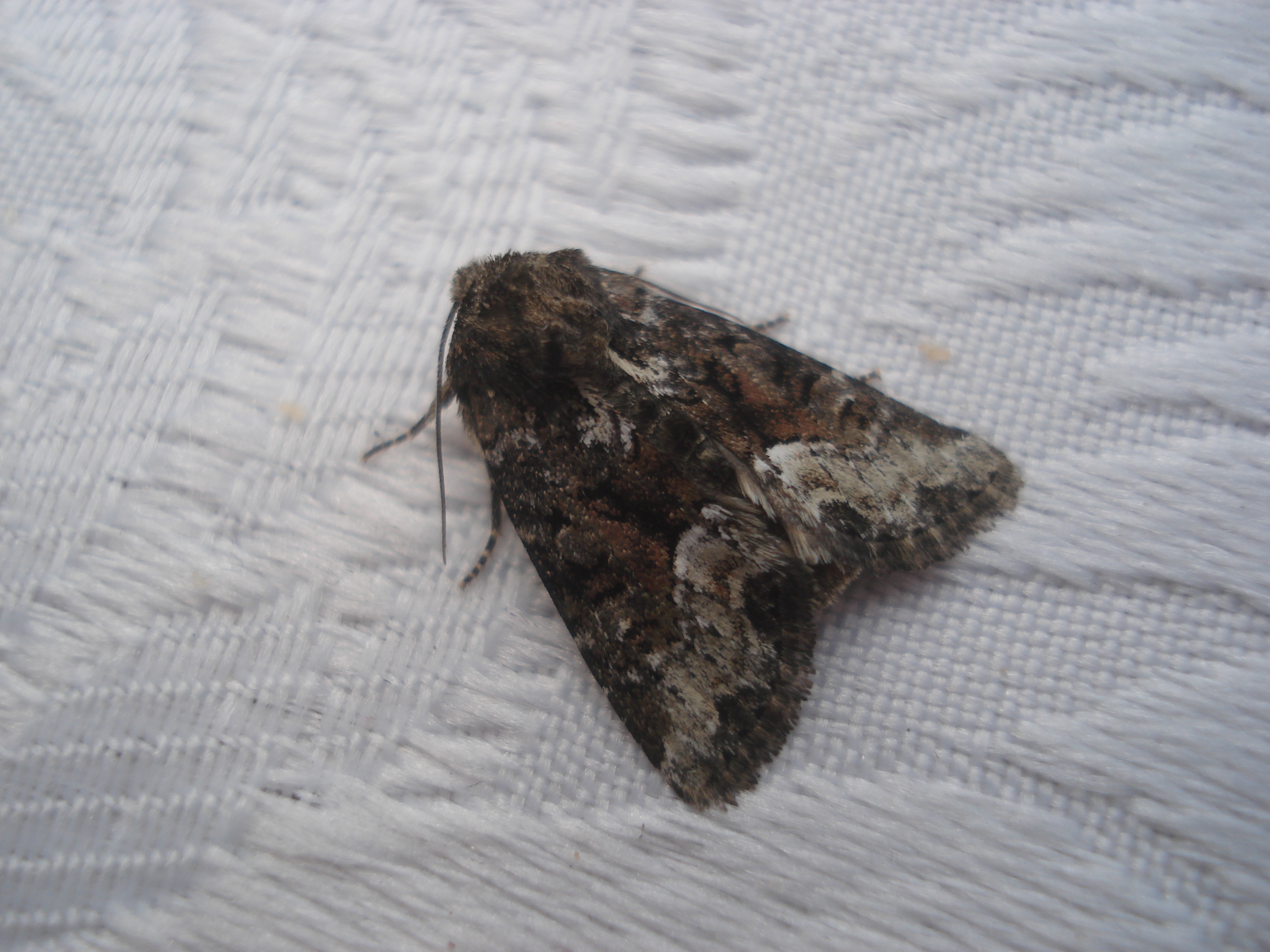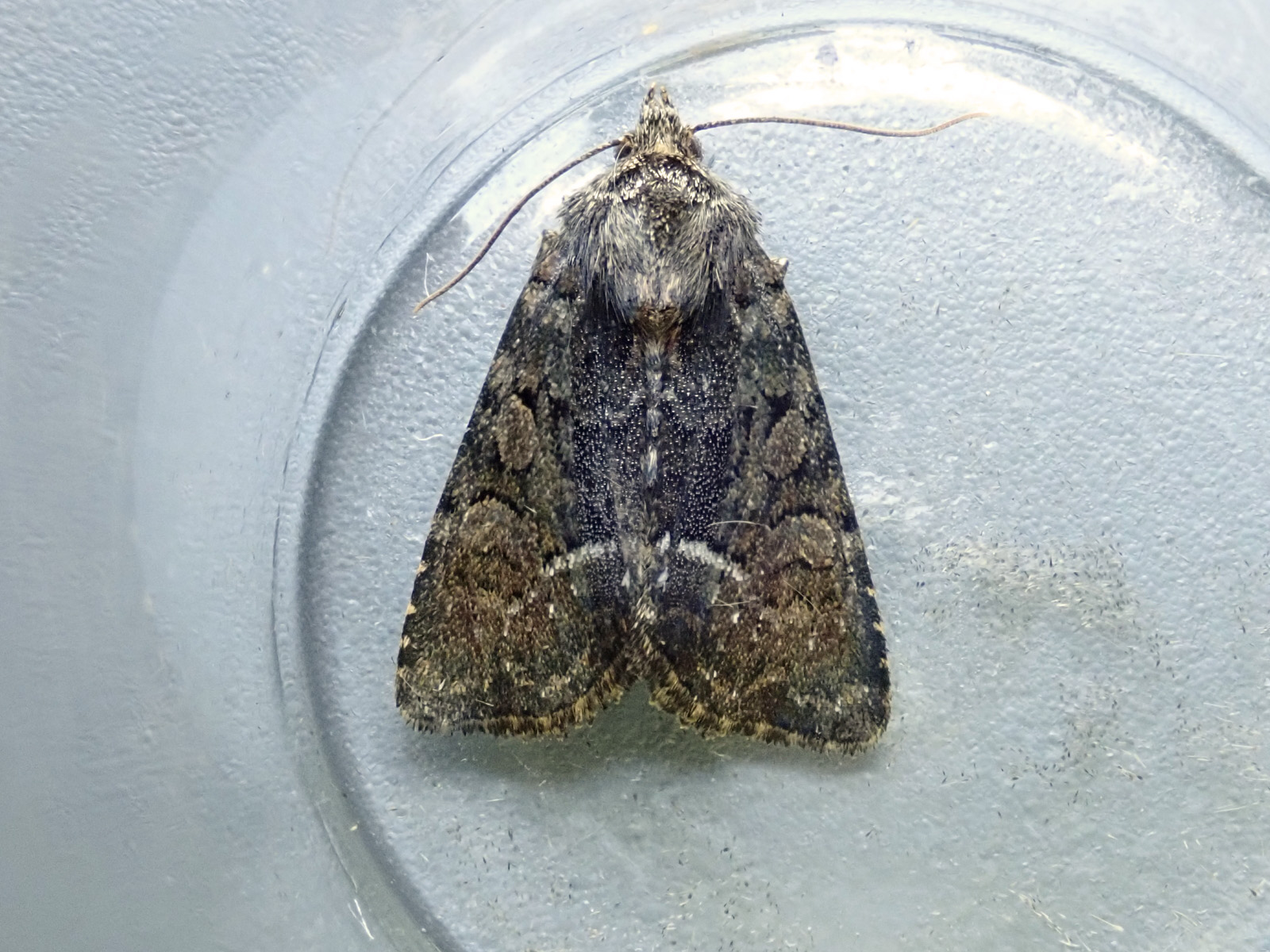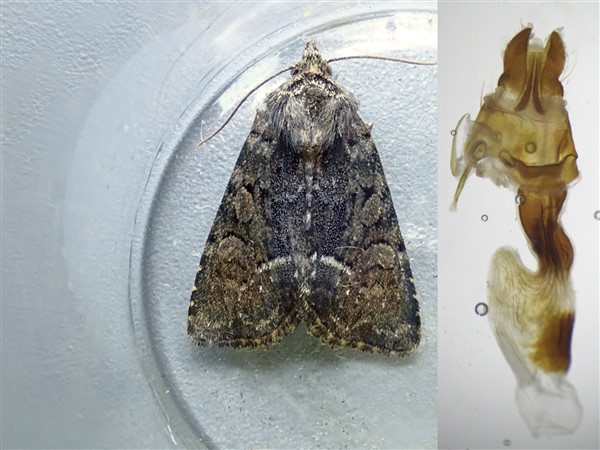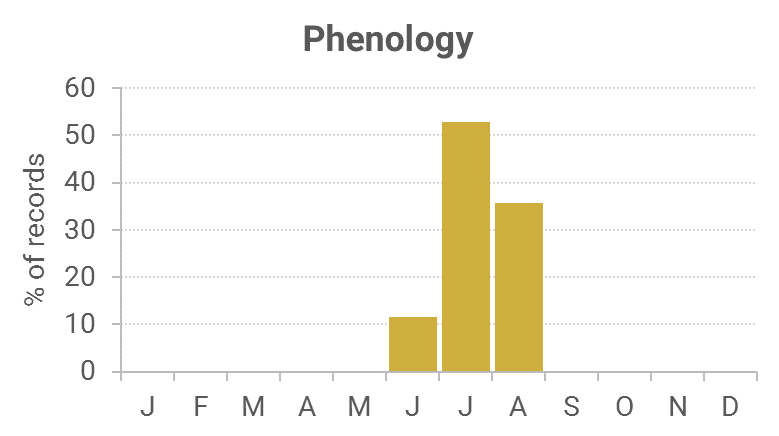Identification
Only separable from Marbled Minor and Tawny Marbled Minor by examination of the genitalia.
Record undissected specimens as Marbled Minor agg. (Oligia strigilis agg.)
Recording Method.
Attracted to light, also comes to sugar and flowers.
Life cycle
One generation, but a month later than England. Overwinters as a larva during August to spring, pupating among the roots of the foodplant.
Larval foodplants
Grasses, including Cock-s-foot and Wavy Hair-grass.
Habitat
A wide variety of grassy sites, including coastal cliffs, heathland and woodland, but not urban areas.
History
The first for the region was when F. W. Smith caught one on 28th June 1943 at Closeburn (E. W. Classey, The Entomologists’ Gazette 1: 51).
Sir Arthur Duncan (1909-84) during his lifetime had found it at Closeburn and Tynron.
During 1975-82 there were two records from Caerlaverock, three from Waterside Mains at Keir, and a single from Bridge of Dee Rothamsted stations. Then, from 1985 to 1993, thirty eight records were recorded from the Mabie Forest station.
Confirmed records from 1997 to 2010 occurred at Kirkton and Durisdeer (VC72), Carruchan Moss and Mersehead RSPB (VC73).

